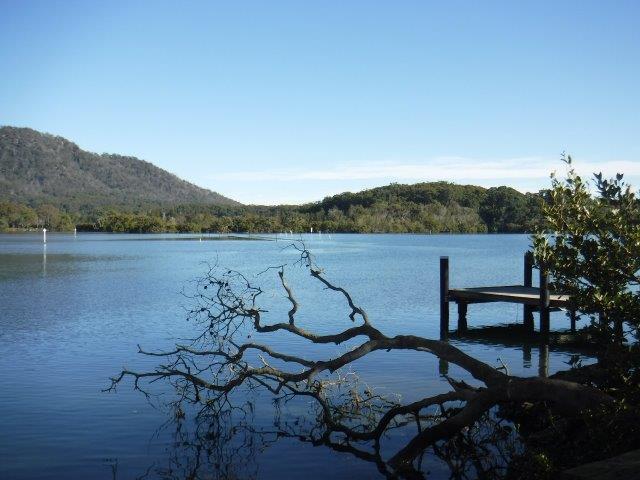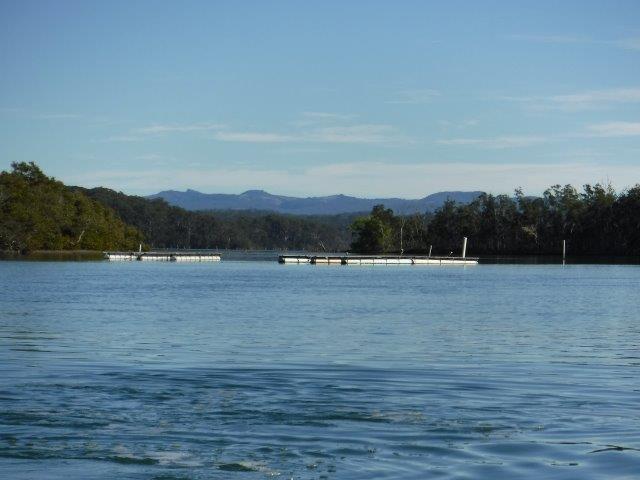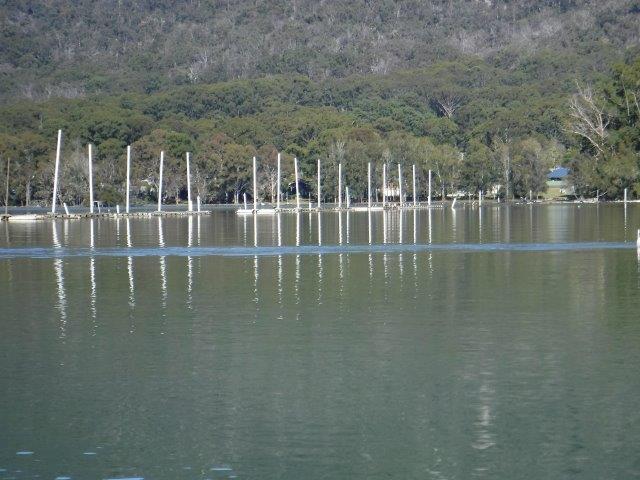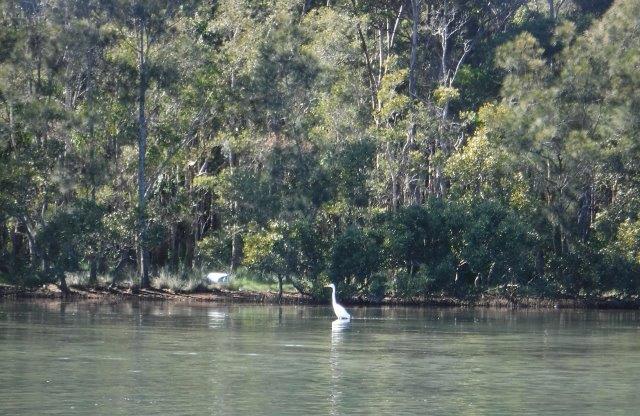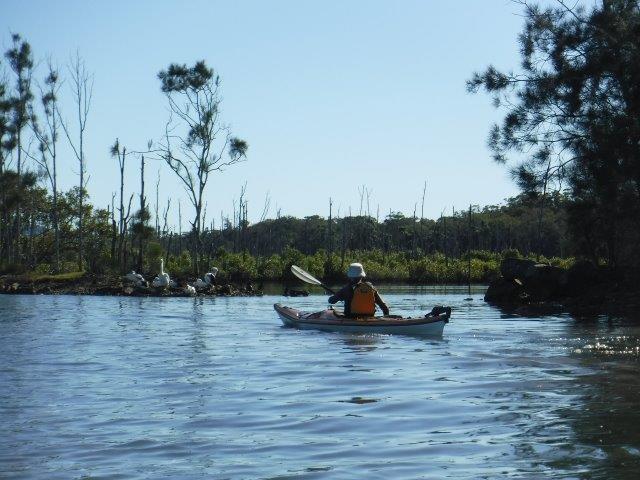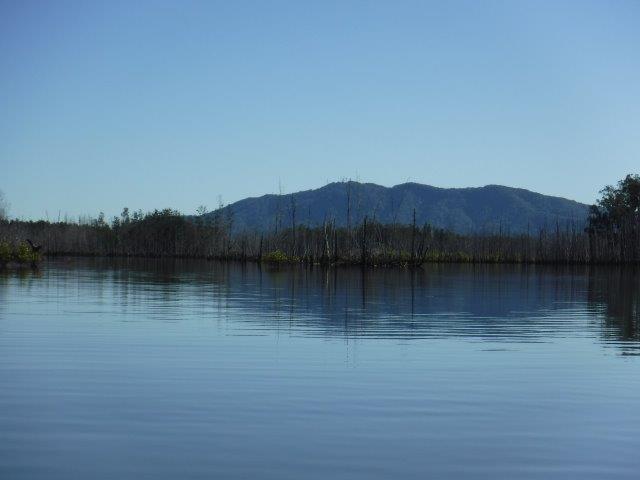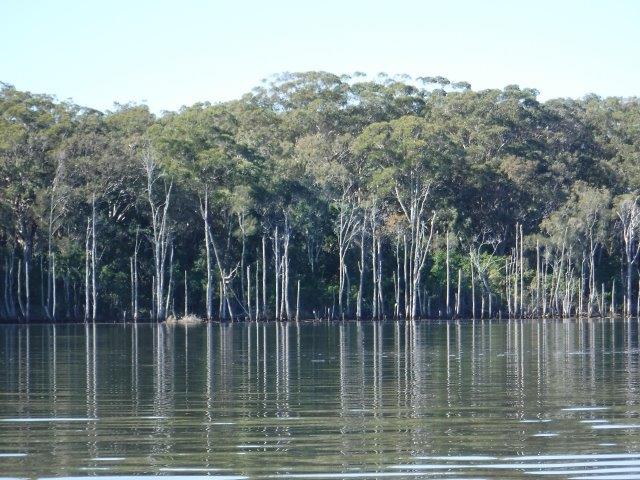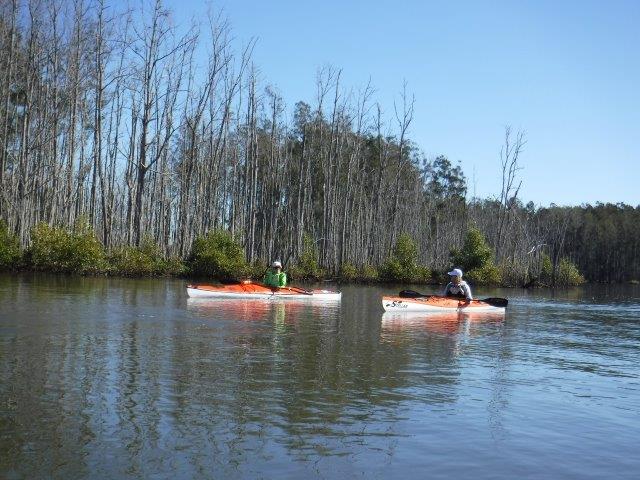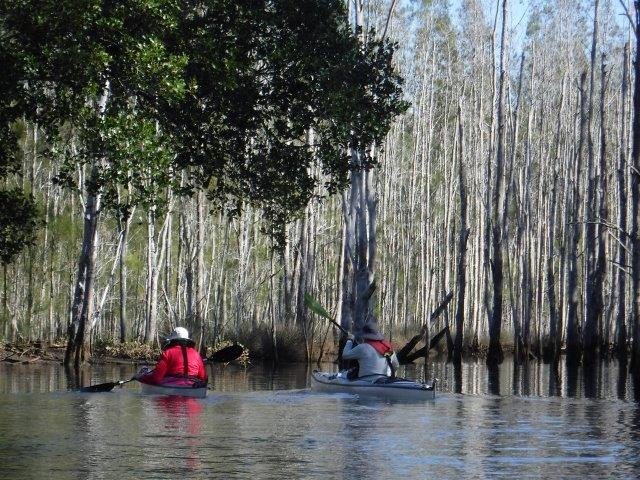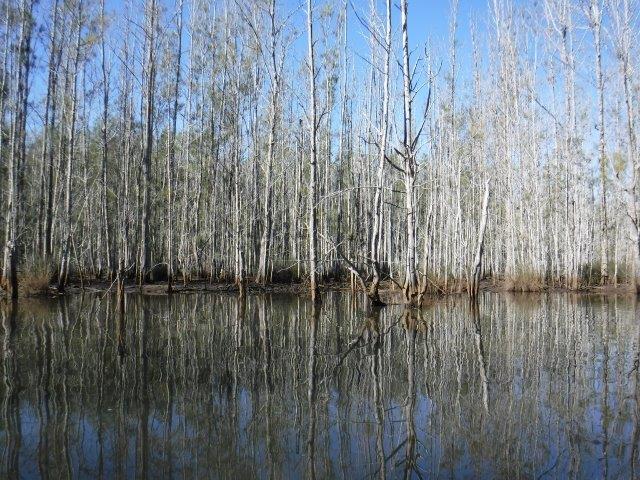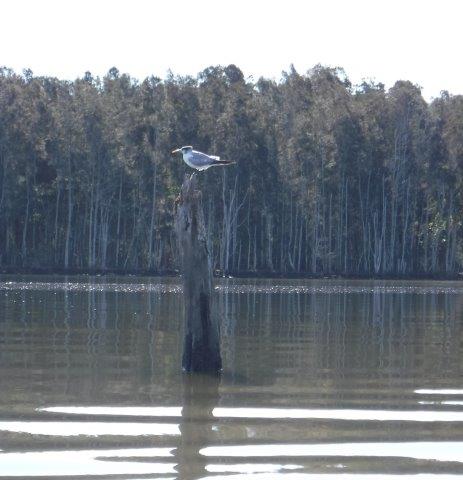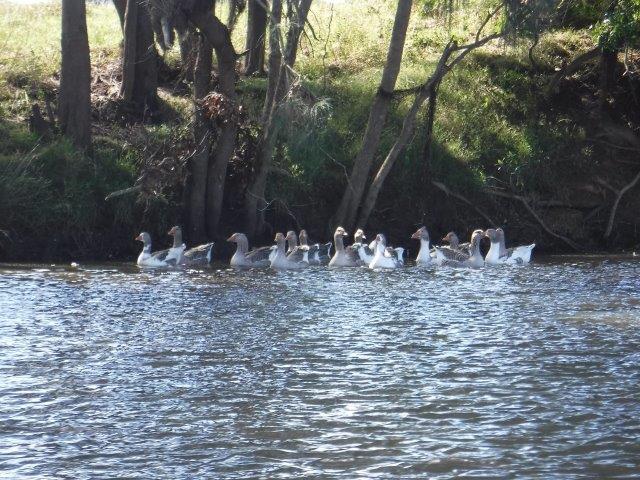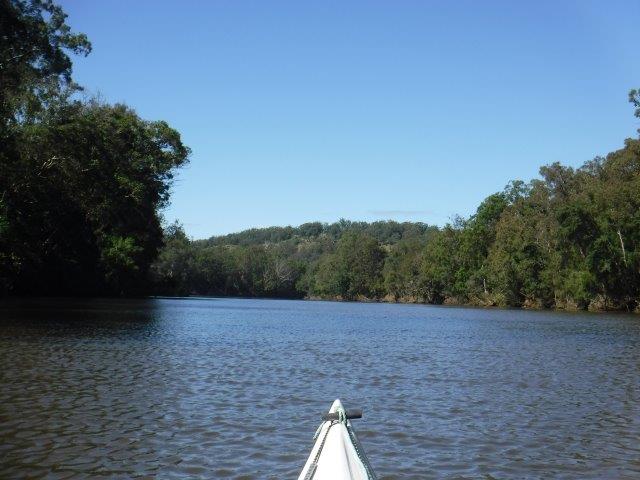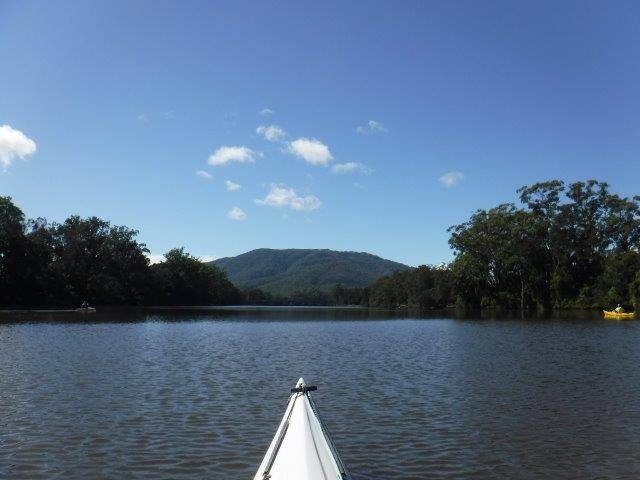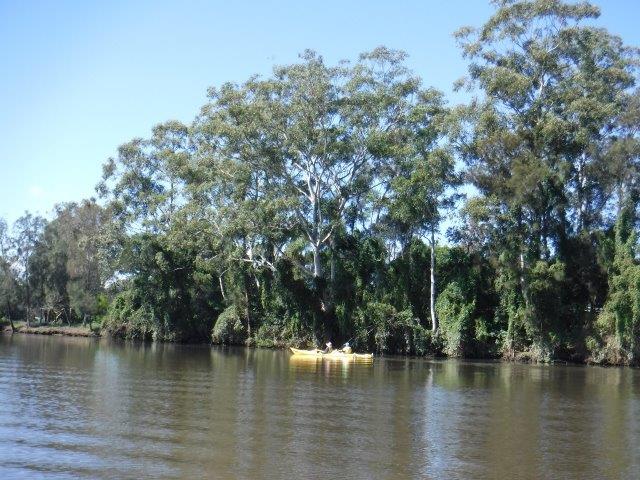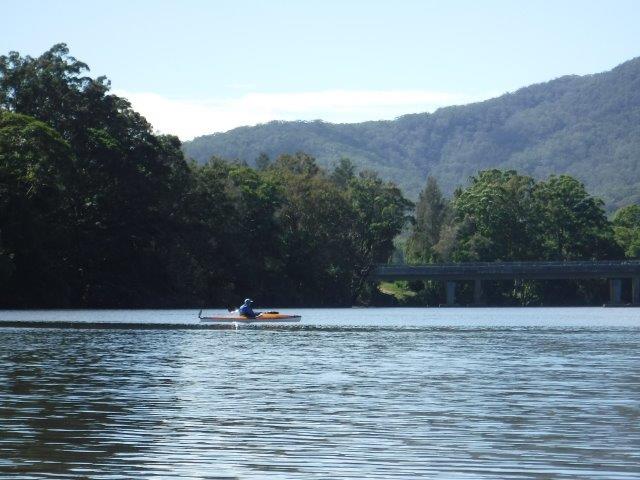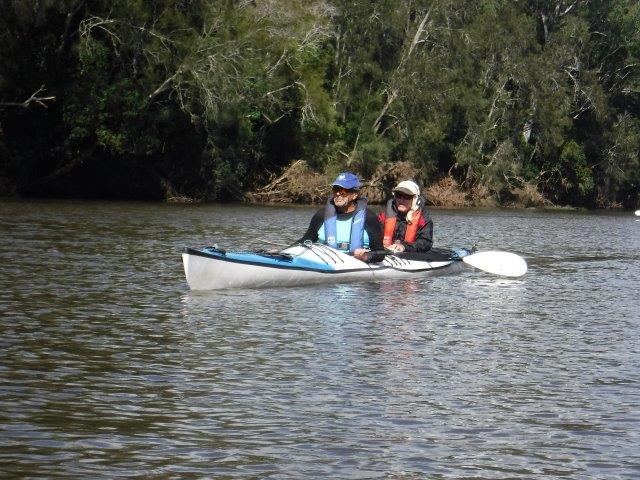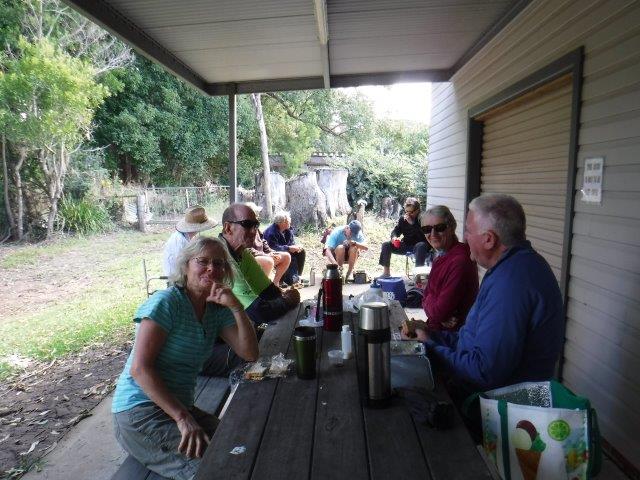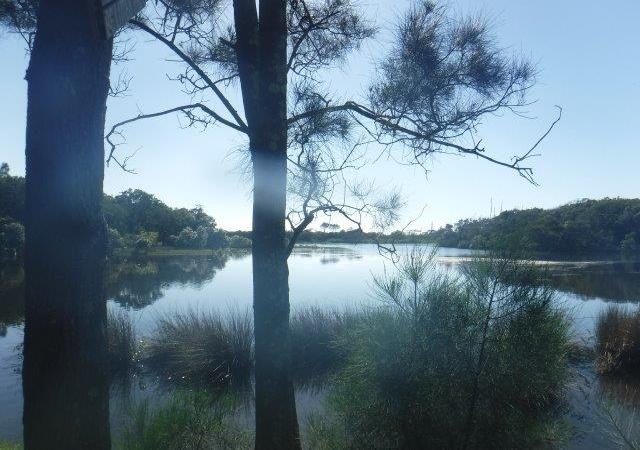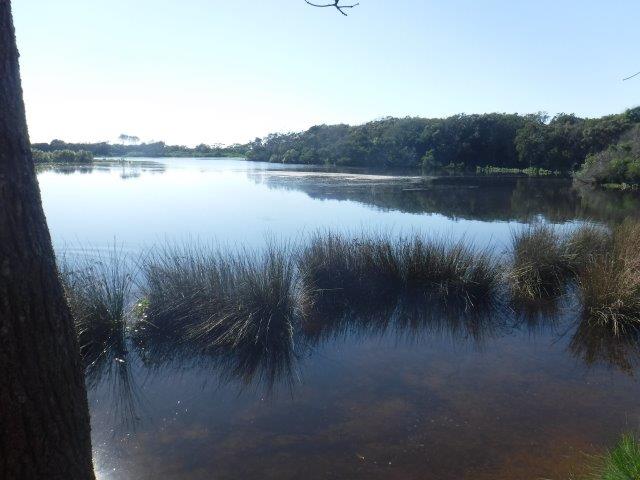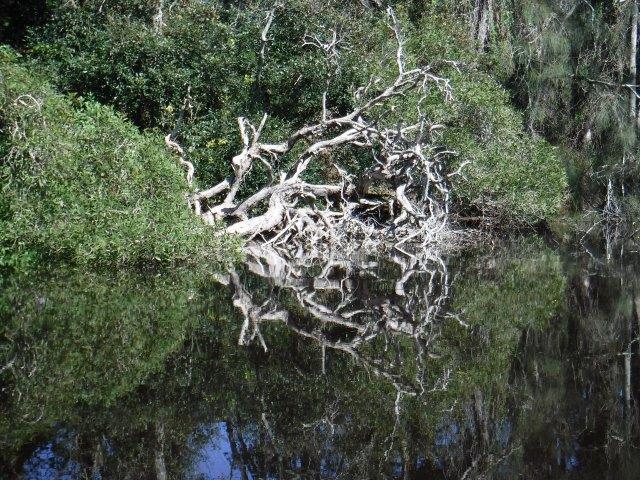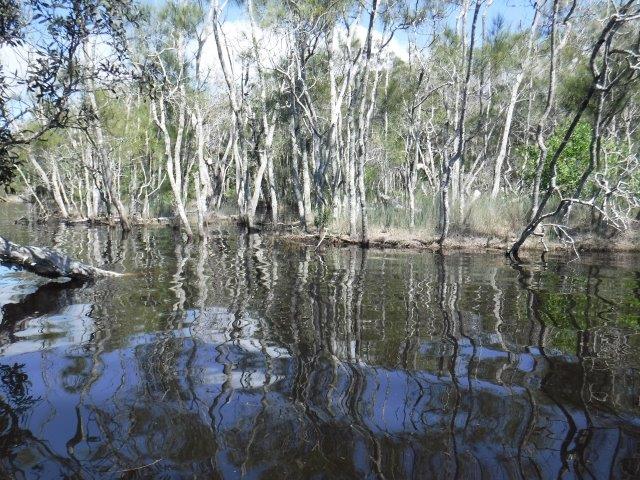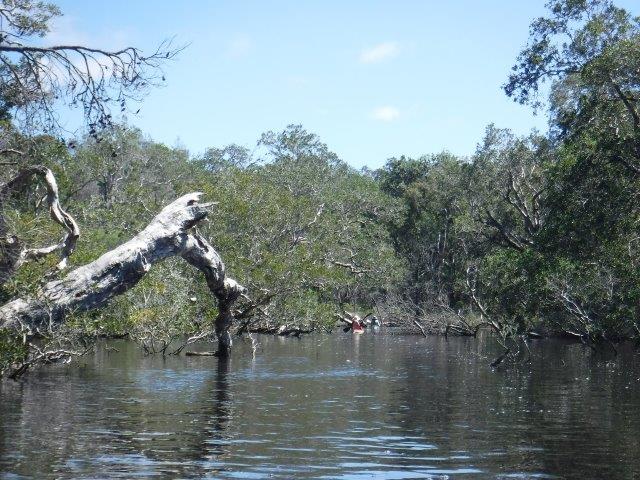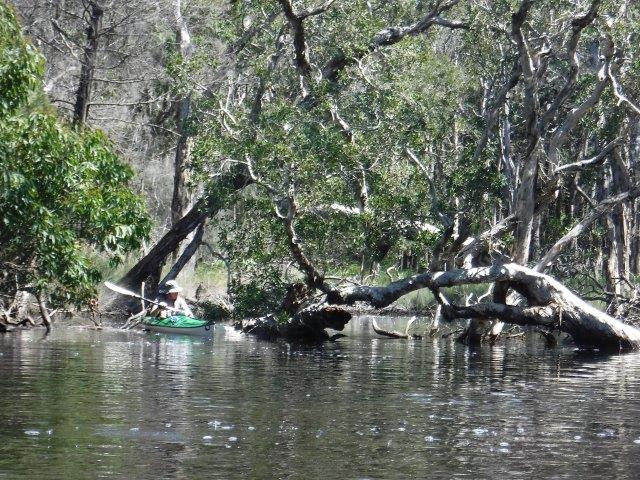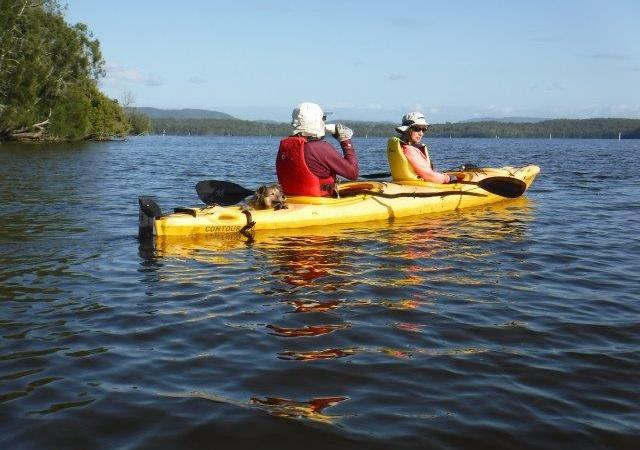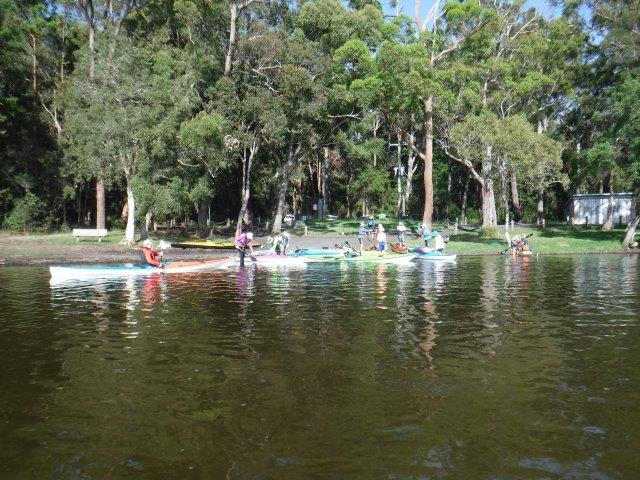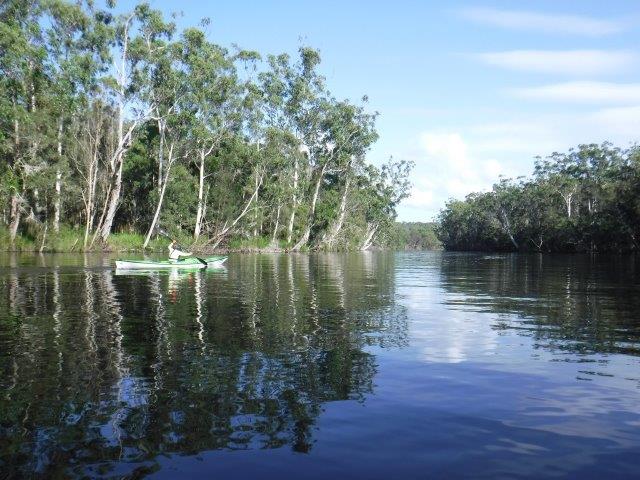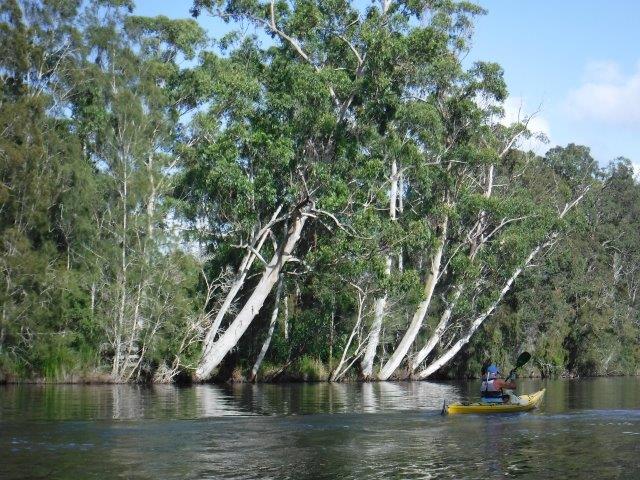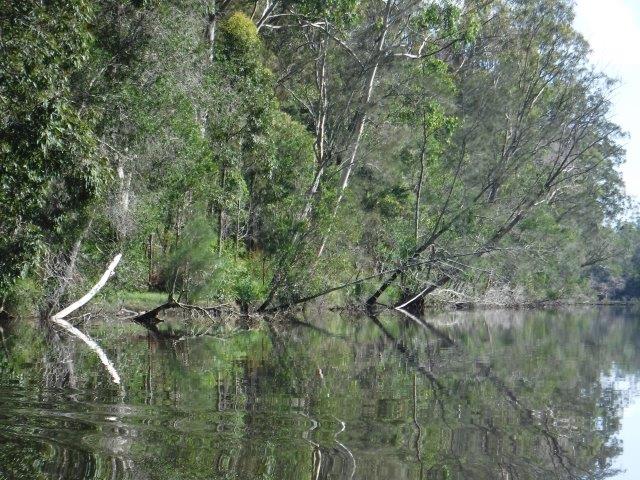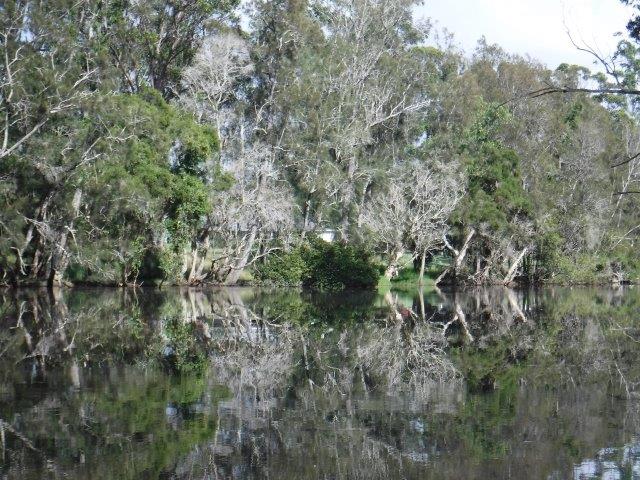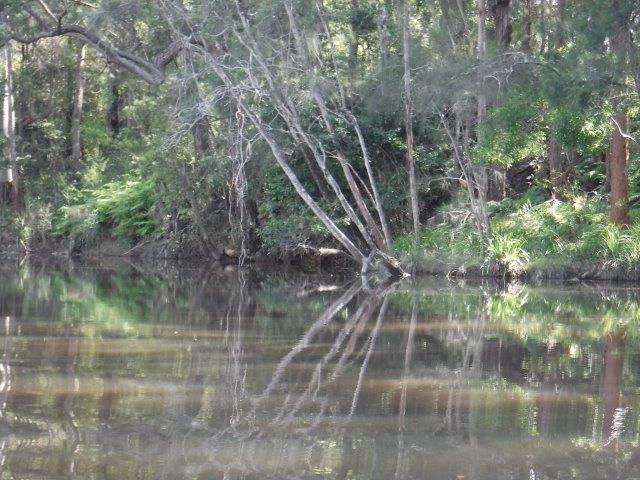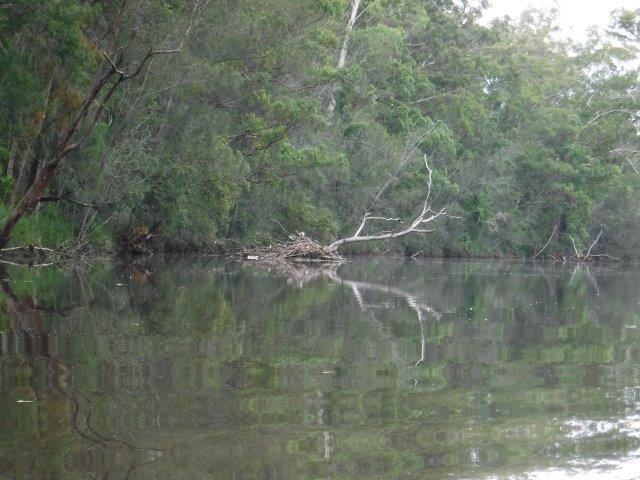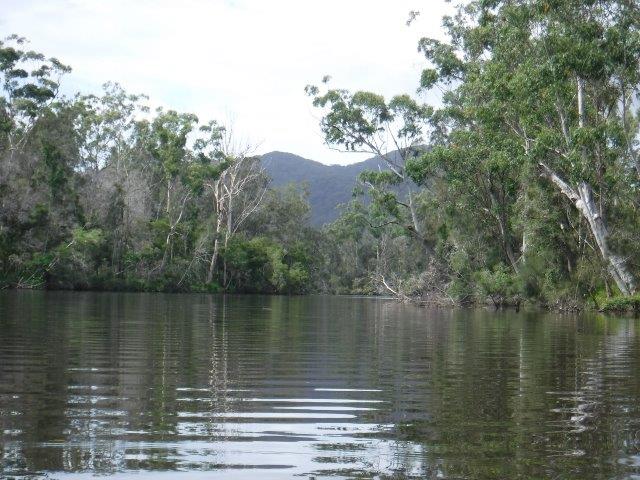Hi everyone,
Fifteen of us enjoyed another cool but beautiful morning on the water last Sunday.
Greg led us on a paddle around Stingray Creek down to Queens Lake. We had good water & not too many tinnies which was a blessing given it was a long weekend. This is a lovely, relaxing paddle and we meandered through side lagoons and along the creek towards the lake and the large inlet just before the lake. Surrounded by hills, this is a protected paddle and feels like a little world all to itself with lovely old mangroves here and there, glimpses of houses through the trees and wading birds in the shallows.
At the launching spot I was interested to see a sign for the Cod Grounds Marine Park. I had not heard of this before and it has an interesting story.
The Cod Grounds Commonwealth Marine Reserve was established in 2007. It is approximately 5.5kms offshore from the Camden Haven, covers four square kms with depths ranging from 21 to 46 metres. It is one of eight parks managed under the Temperate East Marine Parks Network. The primary reason for its establishment was to protect a significant aggregation site for the critically endangered East coast population of the grey nurse shark. It is also a biologically important area for the protected humpback whale, vulnerable white shark and a number of migratory seabirds. In 2017 it’s status changed to a Marine Park and it is wholly zoned as a national park. (Wikipedia) The Stingray Creek bridge has a history too. The original crossing from North Haven to Laurieton was made via a ‘pack-horse’ punt which was pulled across by hand. It was said to have been installed by teamsters who hauled logs from Green Hills ( now Bonny Hills) to Limeburners Creek for transportation by the old log punt to Longworth’s Mill in Laurieton. When disaster struck and the old punt sank, for three years all supplies etc had to be rowed across in a boat to Laurieton. The first bridge was opened officially in 1931. It was a one way wooden bridge referred to as the Humpty Back bridge. The next bridge, which replaced the Humpty Back bridge, was opened in 1961 followed by the current bridge which came into being in 2017. (Camden Haven Courier).
Thanks Greg for leading this paddle.
Cheers
Caroline



